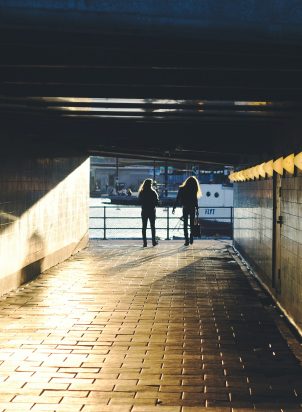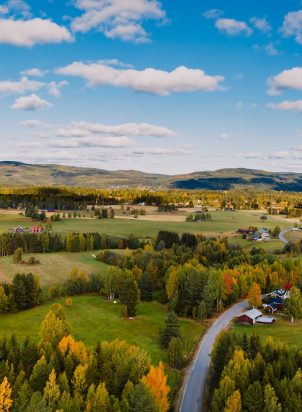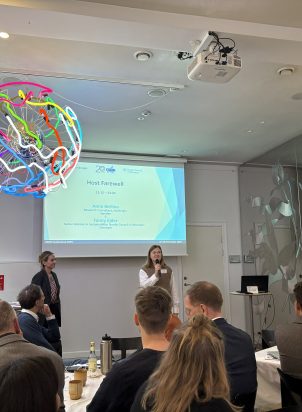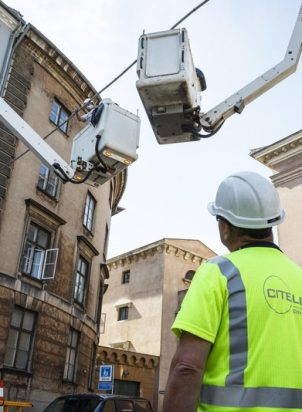What does it mean to host the “right kind” of tourist? How can tourism be made socially sustainable, not just economically or environmentally sound, in Nordic communities?
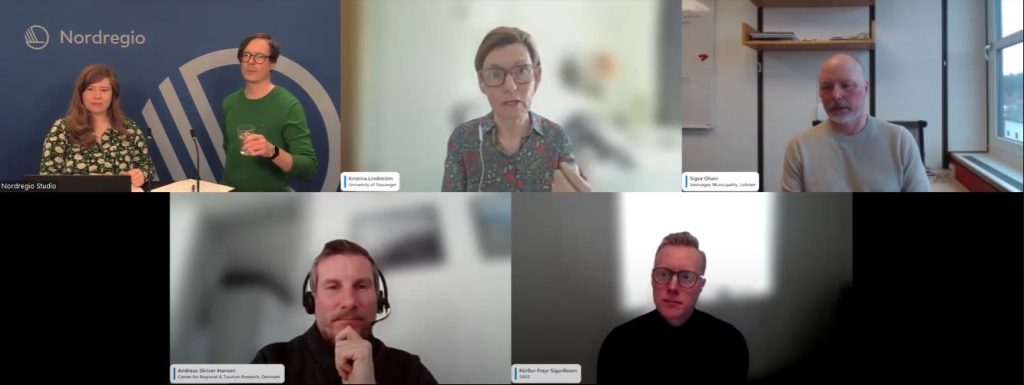
These were the pressing questions explored during Nordregio’s recent webinar and report launch, The Right Kind of Tourist? Rethinking tourism’s impact on Nordic communities. Spoiler: there are no easy answers, but there’s no shortage of insights, dilemmas, and promising practices either.
Beyond Revenue: Why Social Sustainability Matters Now
The event brought together researchers, regional practitioners, and policymakers to share the findings from the final report of the Socially Sustainable Rural Tourism project. As tourism numbers continue to climb across the Nordics, the conversation is shifting from “how much?” to “how well?”and that’s where social sustainability comes in.
Lead author Ágúst Bogason opened the event by challenging attendees to look beneath tourism’s sunny surface. While economic growth, infrastructure upgrades and job creation are highly visible benefits, the less tangible impacts on housing, healthcare, trust, and community identity, are often overlooked or under-measured.
“There’s a real appetite for addressing the social dimension of tourism,” said Ágúst, “but we lack common definitions, consistent indicators, and the tools to operationalise the concept in policy and planning.”
Eight Nordic Regions, Eight Shades of Pressure
Drawing on fieldwork in eight Nordic regions, the report offers a rich mosaic of how tourism plays out in real life, from seasonal surges to slow-burn transformations. Nordregio’s Maja Brynteson and Lisa Rohrer helped to flesh out the details of the case studies behind the results.
- Southern Iceland welcomes two million tourists a year to a region with only 35,000 residents. The result? Strained emergency services, housing challenges for foreign tourism workers, and safety concerns linked to natural attractions. Tolerance levels, surveys suggest, are dropping.
- In the Faroe Islands, residents are actively working to avoid “doing an Iceland,” with initiatives like Closed for Maintenance and new environmental legislation. Yet questions remain over how to distribute benefits more equitably between urban and rural areas.
- Ilulissat, Greenland, faces rapid tourism growth ahead of a new international airport. While economic benefits are substantial, they often bypass local businesses. Community members expressed concerns about cultural dilution and seasonal workers with limited ties to the area.
- In Lofoten, Norway, small villages of fewer than 100 residents host hundreds of thousands of visitors annually. Local authorities are grappling with everything from waste management to road safety, and from campervan congestion to fishing quota conflicts.
- The High Coast in Sweden stands out for its proactive approach, blending visitor education (via the “High Coast Promise”) with host engagement strategies and strong regional cooperation.
From Research to Reality: Panelists on the Frontlines
The heart of the webinar was a lively and refreshingly honest panel discussion featuring a mix of local practitioners and academic voices. Together, they dug into the real-world dilemmas of tourism development in the Nordics where values, voices, and visitor numbers don’t always align.
“We’re hunting a moving target”
Sigve Olsen, Head of Economic Development in Vestvågøy Municipality, Lofoten, gave a frank account of the logistical and political balancing act in a region where tiny villages of 11 people host 300,000 tourists annually.
“We manage through close cooperation with inhabitants, farmers, and landowners,” Olsen said. “We support local initiatives and we’re available on the phone when there are problems.”
But managing visitor flows isn’t static work. “Tourism is always changing,” he noted. “We’re constantly hunting a moving target. We fix one thing, and something else pops up, like new safety risks with winter visitors driving in icy conditions, or tensions over fishing quotas between locals and tourists.”
The complexity is compounded by the fact that any regulation targeting tourists inevitably affects locals too. “When we regulate camper vans or build new facilities, we’re told we’re spending public money on tourists, not on residents. But we have to keep trying, adjusting, listening. Doing nothing is the worst option.”
“Residents are the number one stakeholders”
Thordur Freyr Sigurdsson, Manager of Development at the South Icelandic Local Government Association (SASS), emphasised the need to place residents, not economic growth, at the centre of tourism development.
“We’re seeing population turnover where many workers come and go. Some places now have 80% foreign workers. That creates real questions of belonging, for them and for native residents. Is this still my community? Who is this place for?”
He pushed back on the common narrative that residents need to simply ‘understand’ the benefits of tourism. “We shouldn’t be trying to change residents’ attitudes. We need to change the conditions that frustrate them. If there are problems, address them. Don’t just tell people to be thankful.”
He advocates for tools like resident surveys and small working groups to get a more nuanced picture of community needs: “It can’t be a burden to participate. People need to see more benefits than costs in their daily lives.”
“Social sustainability prevents future conflicts”
From the research side, Kristina Lindström, Associate Professor at the University of Stavanger, underlined the long-term value of centring people in tourism planning.
“Community support generates value, even if it’s not immediately monetary,” she said. “When residents feel heard and included, you avoid friction and conflict, which are expensive for municipalities to deal with.”
She also highlighted the fragmentation of responsibility across sectors. “Many of tourism’s social impacts stem from areas we don’t normally consider part of tourism policy, like housing, traffic, and infrastructure. We need to break down these silos.”
Most importantly, she added a reminder that “the local community is not a homogeneous group. Different people have different needs. Balancing those diverse interests is the real challenge.”
“Rethinking growth isn’t about ‘less’. It’s about better distribution”
Andreas Skriver Hansen, Senior Researcher at Denmark’s Center for Regional and Tourism Research, brought a systems-thinking perspective, particularly from his home island of Bornholm.
“In a tourism economy, growth is inevitable, but it needs to be reframed. The key question is: what do we do with that growth? Who benefits, and how do we support community well-being, not just visitor satisfaction?”
He shared an illustrative twist: when Bornholm was designated a future green energy hub, some of the most vocal critics of tourism suddenly flipped. “Tourism became a symbol of local quality of life. People started defending it, not because it’s perfect, but because it’s part of what makes the island liveable.”
Andreas also called attention to the evolving role of Destination Management and Marketing Organisations (DMMOs). “The future is in that second M—management. DMMOs should become community conveners, helping to interpret national regulations, guide local planning, and support place-based development. Some are already doing this well.”
The Dilemma: Tourism for Whom?
Throughout the discussion, one theme echoed again and again: local communities are not homogenous. Some residents benefit directly from tourism, others bear its costs. Effective policy must therefore go beyond one-size-fits-all approaches. It needs nuance, participatory governance, and a broader understanding of success.
As Kristina Lindström put it: “Tourism is created in many other policy domains: housing, infrastructure, traffic, not just by tourism policy. We need to get better at connecting the dots.”
What Needs to Happen Next?
Drawing from the report and the discussion, several clear recommendations emerged and Ágúst summed them up to round off the event:
- Define and measure what socially sustainable tourism really means.
- Develop consistent indicators covering community well-being, cultural integrity, and public attitudes—not just economic impact.
- Strengthen coordination between national, regional and local levels.
- Ensure community involvement in tourism planning and development, especially in rural and high-pressure destinations.
- Invest in better data on the social dimensions of tourism, not just the economic and environmental ones.
- Recognise and regulate responsibly, balancing resident rights, business needs, and visitor expectations.
Watch, Read, Engage
Didn’t catch the event live? We highly recommend watching the full webinar recording and downloading the report to go deeper into the findings and case studies.
This isn’t the end of the conversation. At Nordregio, we’ll continue to explore how tourism intersects with rural development, local governance, and regional resilience. Follow our work for more research, events, and practical insights from across the Nordics. Because the “right kind of tourist” isn’t just someone who visits respectfully. It’s someone whose presence is welcomed by communities that have the power and support to shape their own future.




